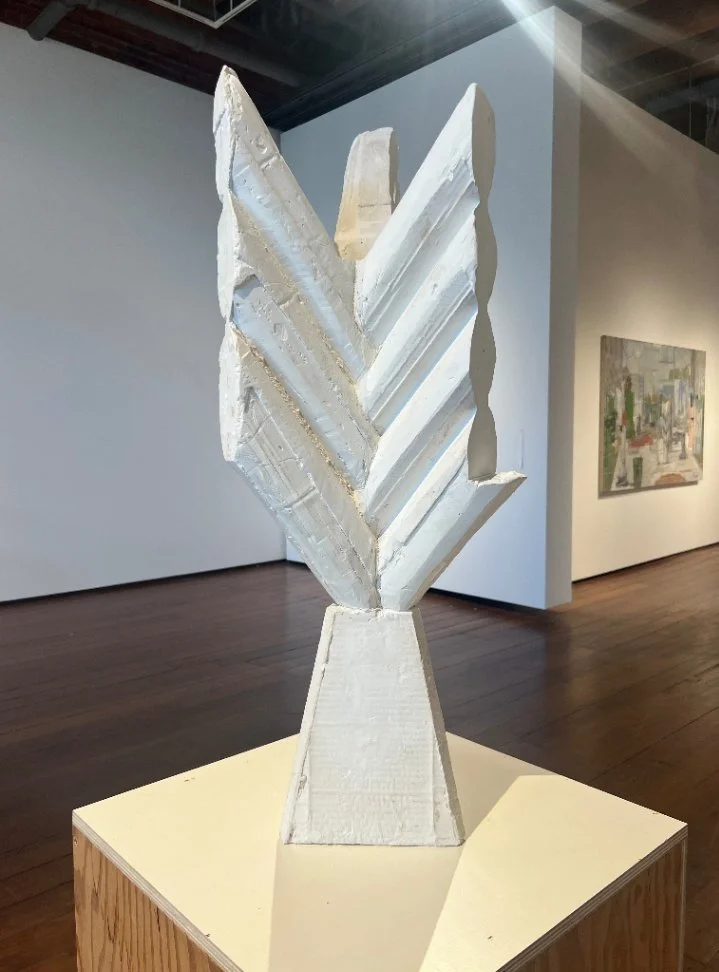Next to Something Wonderful: Whiting Tennis’s “Refuge”
Whiting Tennis’s solo show, Refuge at Greg Kucera Gallery in downtown Seattle, is a place for anyone looking to steal away “from the outside world’s turmoil,” as the gallery’s brief description puts it. In a comment for the press release, Tennis says that art has an ability to shield us from even the expectations of art—the expectations being that art ought to make a statement, say something important, be political, be confrontational, be revelatory. This has always been a tall order, but perhaps even more so in today’s fractured cultural landscape, where audiences come with such varied expectations of what art must look like, can be, or should do. Tennis has instead concluded that the real solace lies within the comfort of the work itself. In his own words, it’s “a wave of gratitude when standing next to something wonderful,” simply a sanctuary where one can breathe easy, surrounded by beauty.
One certainly finds beauty in Refuge. Tennis presents us with a bevy of works: some visually intricate, many of them collages, others only the essential elements, stripped back and bareboned. He plays with cardboard, plaster, concrete, oil, acrylic, china marker, charcoal, sand, and pastel. Among all this variety, Tennis builds a cohesion that extends beyond the canvas.
In CONSERVATORY (2025), shapes cut from different origins are affixed to the canvas in a single plane. A green piece here and a yellow one there, surrounded by muted grays and blues. Some fragments are less apparent, blending in with the other textures and colors around them, assimilating. But each element begs that same unanswerable question: where is it from? They have been taken out of their original contexts and placed here instead. It’s reminiscent of Giovanni Paolo Panini’s Ancient Rome (1757) with its idealized collection of artistic interests—an edenic playground for the mind and soul. Yet Tennis’s “Rome” resists pure idealization, confronting us instead with our inescapable reality. There’s an overwhelming sense of déjà vu in CONSERVATORY, as though the place in the painting were real, a place you’d even been to before. That’s when you realize the statues in CONSERVATORY are here, in this very room. You are taken out of the abstract sanctuary and sucked back into the real world, confronted by concrete.
The cast plaster LIFE FORCE OBJECT (2025) appears like a shimmering white fletching—an arrow buried in the ground, its momentum thwarted, left in the ruinous vestiges of a battlefield. Its surface alternates between smooth and uneven, playing between glare and shadow—a contrast heightened by the piece’s angularity. A jagged point on the right gives us the impression it had been broken off, and just above where the base meets the feathers, there’s a subtle, rust-colored spatter as if the piece had been left to oxidize out in the elements. At the risk of losing this remnant of the past, weathered by time with its rough, wind-hewn edges, Tennis has placed it in the CONSERVATORY to save it, immortalizing the sculpture in a place outside of time.
In addition to his larger canvases, Tennis's show also includes several small works, some only a few inches of cardboard. KING (2025) is one such compact, unadorned piece. The cardboard bears hobby knife score marks, and its edges waver slightly here and there as if it had been crudely cut by an untrained hand. It feels questionable if this monochromatic spattering of paint was a purposeful composition or a discarded palette turned into a Rorschach test. At first, it may look abstract expressionist, but the familiarity begins to seep through. You’ve seen this king a thousand times in your life, playing Rummy or Hearts, or maybe Solitaire. The black wedge at the bottom of the card, the distressed materials, and the indistinct profile of the king all tell a story: that the playing card was torn or burnt or lost, separated from its home and 51 mates, now a relic.
There are eight other smaller works hung alongside KING, each like a fragment of a story, but they’ve all been abstracted to a point that calls into question their reality. The structural forms of DOODLE IN RED OIL (2024) or UNTITLED DOODLE (ARCH AND ANGLE) (2025) appear like landmarks or cityscapes, while DOUBLE CYCLOPS (2024) and RED AND BLUE CASTLE (2024) conjure images of myths and fairytales of bygone cultures. JAN 3, 2023 (2023) merely gives us a date and a pinwheel of colors as if it’s up to us to reconstruct the events of that day. Tennis leaves us hints, and from these breadcrumbs, we desperately—instinctively—try to fill in the gaps; we try to remember.
In trying to remember, things that seem permanent shift before our eyes. In HUDSON (2023), he gives us a real name, a real place, but an imagined scene. The pieces of the collage don’t quite fit together: the bush in the middle is hit by a different light, the foliage to the left seems more in focus than that on the right, and a bold green rectangle sits like a patch stitched over a hole—a temporary fix for our inadequate memory. In true keeping with the collage, Tennis gives us a composite, a tableau composed of different times, different perspectives, different emotions. The light in the sky with its pinkish hue appears like a new spring day, while the leaves are in fall foliage, and that darkened patch of water in the bottom left appears so much colder, as if it were heralding in winter. We’re left with a mix of unquestionable reality and oversaturated idyll. But then, memory, too, is a refuge, blurring the line between what we want to remember and what actually was. And as the glass walls of the conservatory remind us: the refuge is fragile.
Whiting Tennis: Refuge is on view at Greg Kucera Gallery from September 4 through November 1, 2025.




